ROUTE OF THE MAYA
November 9 - 26, 2010
Page Five
Guatemala
Guatemala is about the size of Tennessee with a population of over 14 million. It has largely mountainous terrain. Education is compulsory through the 6th grade but attendance is spotty. About 50% of the population is engaged in agriculture, often at the subsistence level. More than half of Guatemalans are descendants of Mayan peoples. The current government is a constitutional democratic republic. Independence was gained from Spain in 1821. It was also briefly part of Mexico, then part of a Central American federation. From the mid-19th century to the mid-1980s, there were a series of dictatorships, coups, and stretches of military rule. A peace accord signed in 1996 ended a 36-year armed conflict. Violent crime is a major concern due to endemic poverty, an abundance of weapons, a legacy of violence, and dysfunctional law enforcement and judicial systems. The country has one of the most unequal income distributions in the hemisphere. The wealthiest 20% consume 51% of the gross domestic product. About 51% of the population lives on less than $2 a day. It has also suffered from natural disasters including hurricanes, mudslides. The U.S. Government recommends that U.S. citizens do not travel on their own to Guatemala due to the high crime and violence. Guatemala’s biggest business is the export of coffee. Other export crops include sugar, cotton, flowers, natural rubber and bananas. Tourism is the second largest industry with 35% of the population employed in services. The remaining 15% are employed by industry, with Guatemala City being the industrial and commercial center of the country. Guatemala suffers from the inequitable distribution of land and wealth, uneven development, and the dependence on a few export crops for its economy mainstay. The poor distribution of land may be the single most important factor to explain the poverty and quality of life in Guatemala. Nearly 90 percent of the farms are too small to provide adequate subsistence, while 2 percent of the farms use up 65 percent of the land.
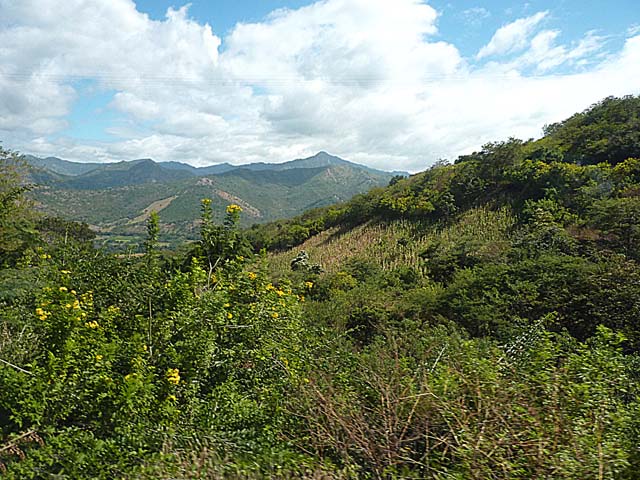
We rode overland in our tourist van from Copan Ruinas, Honduras to Guatemala City, driving through
gorgeous mountain scenery. We never stopped along the roadside to take photos of the views, so this photo
was taken from the van. Although our guide did not say so, I am sure we did not stop because of the danger
of being seen by opportunistic criminals who might engage in robbery and kidnapping.
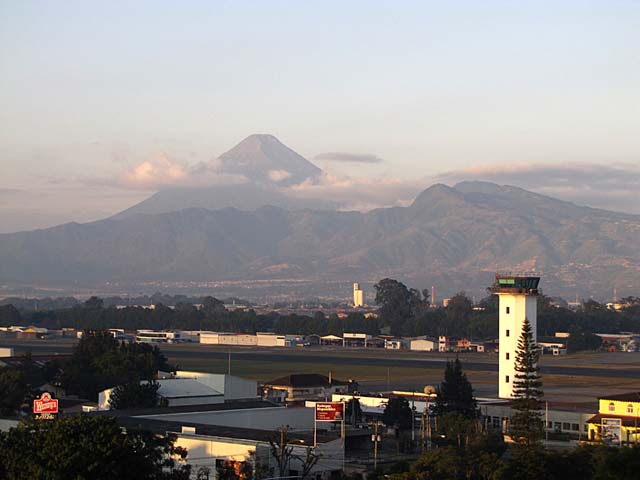
View at dusk from our hotel in Guatemala City with Agua Volcano in the background.
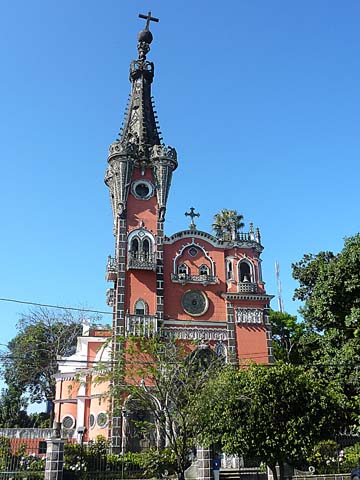
Nuestra Senora Church in Guatemala City. For a while, I
thought the tilted cross we saw on many churches was
intentional, but our guide informed us it was probably due to earthquakes.
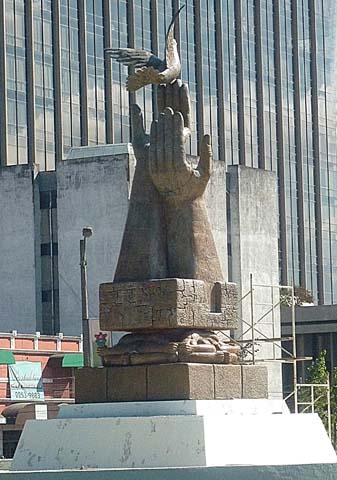
The peace memorial in Guatemala City. Both are left hands,
because left hands are closer to the heart. The peace treaty
was signed in 1996 ending the civil war.
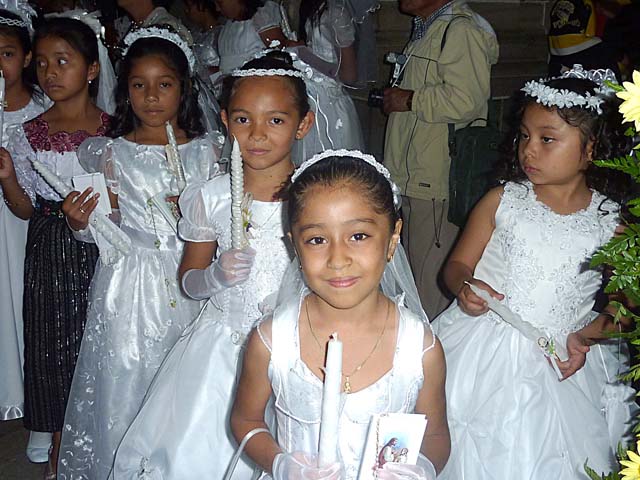
Children receiving their First Communion at Metropolitan Cathedral in Guatemala City
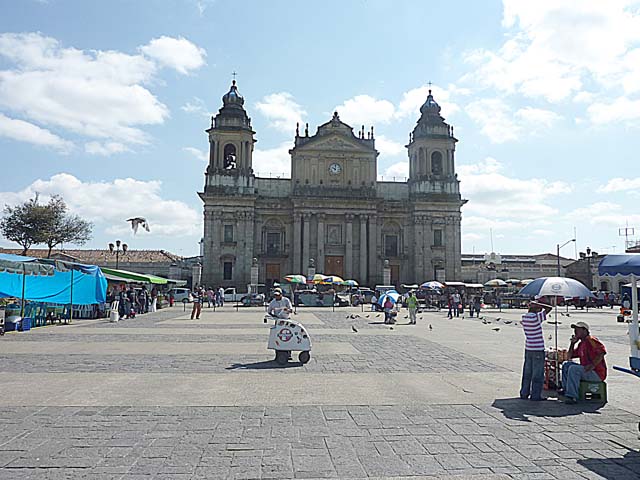
Metropolitan Cathedral in Guatemala City, the main church of the Archdiocese of Guatemala. It is located at
the Parque Central in the center of the city. The main body of the church was built between 1782 and 1815.
The towers were completed in 1867. It has withstood numerous earthquakes and has been repaired numerous
times. In front of the cathedral are a series of 12 pillars each inscribed with the names of hundreds of people who
"disappeared" during the civil war of Guatemala.
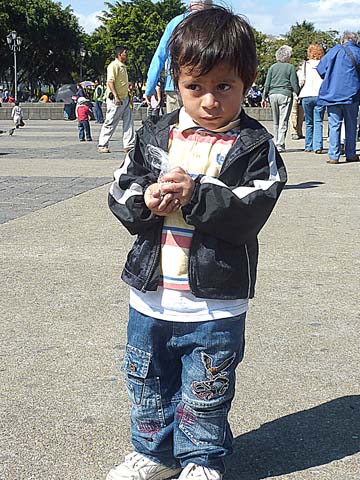
A shy, young boy at the central plaza
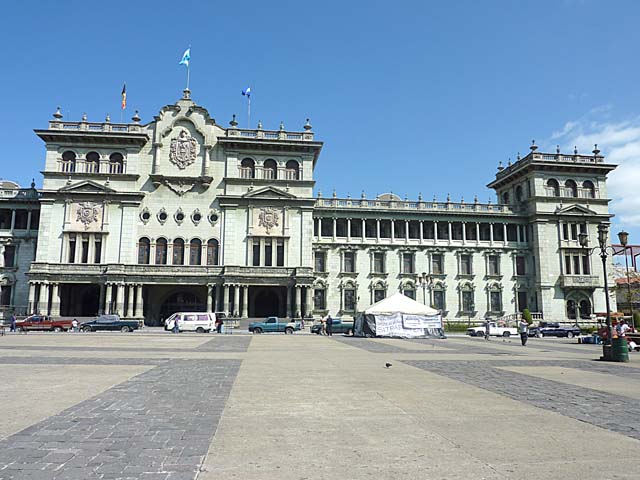
National Palace. It was the most important building in Guatemala and was the headquarters of the President.
It is now a museum and also is used for important acts of government. Like the Metropolitan Cathedral, it is
also located at Parque Central.
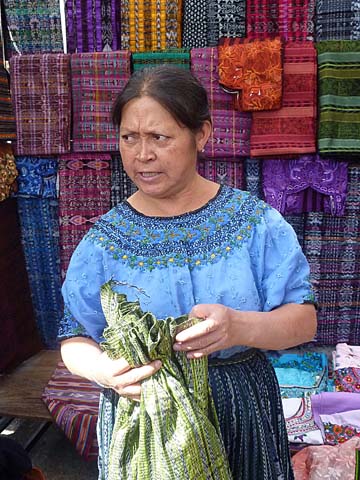
A female vendor at Parque Central in Guatemala City.
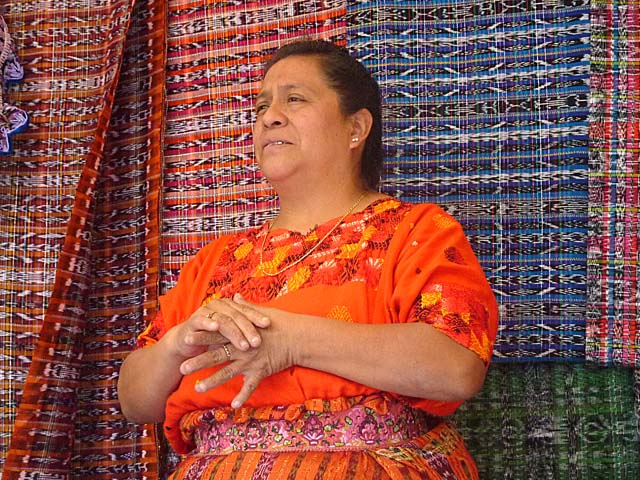
Mayan women have been weaving for centuries. When the Spaniards arrived, they were surprised by the brightly
colored dress of the Mayas. Mayan women traditionally wear traje, which is a combination of a skillfully woven,
multicolored
blouse, a woven wraparound skirt that reaches to the ankles, and is held
together by faja (sash) at the waist. Women also often wear some form of headdress, such as pañuelo, on
their heads,
or
cintas,
four- or five-foot-long colorful ribbons that are braided into their shiny, long, black hair.
A lengthy rectangular rebozo (shawl) and a decorated delantal (apron) are also part of traje.
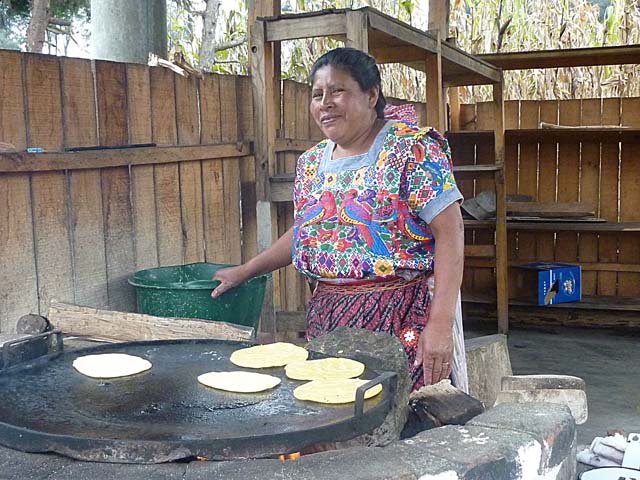
On the way to Lake Atitlan in Guatemala, we stopped for lunch where we saw this pleasant woman making
tortillas. Her 2 front teeth were missing.
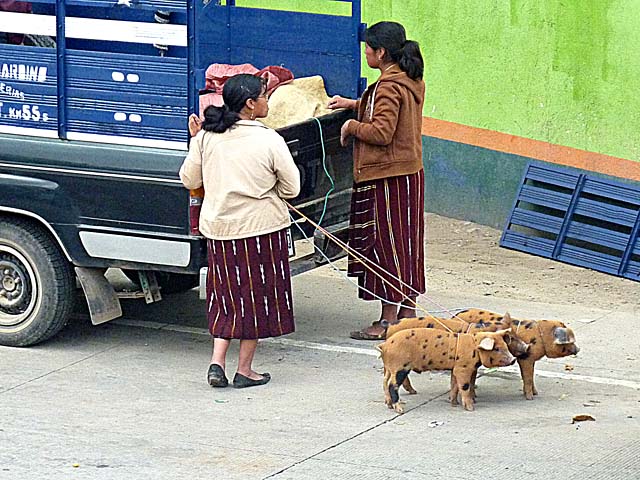
We stopped at a local market along the roadside
not too far from the Lake Atitlan area. Here are a couple
of women with their pigs.
Link to Page 6 - Guatemala continued
Link to Page One of Route of the Maya
Pat's Home Page